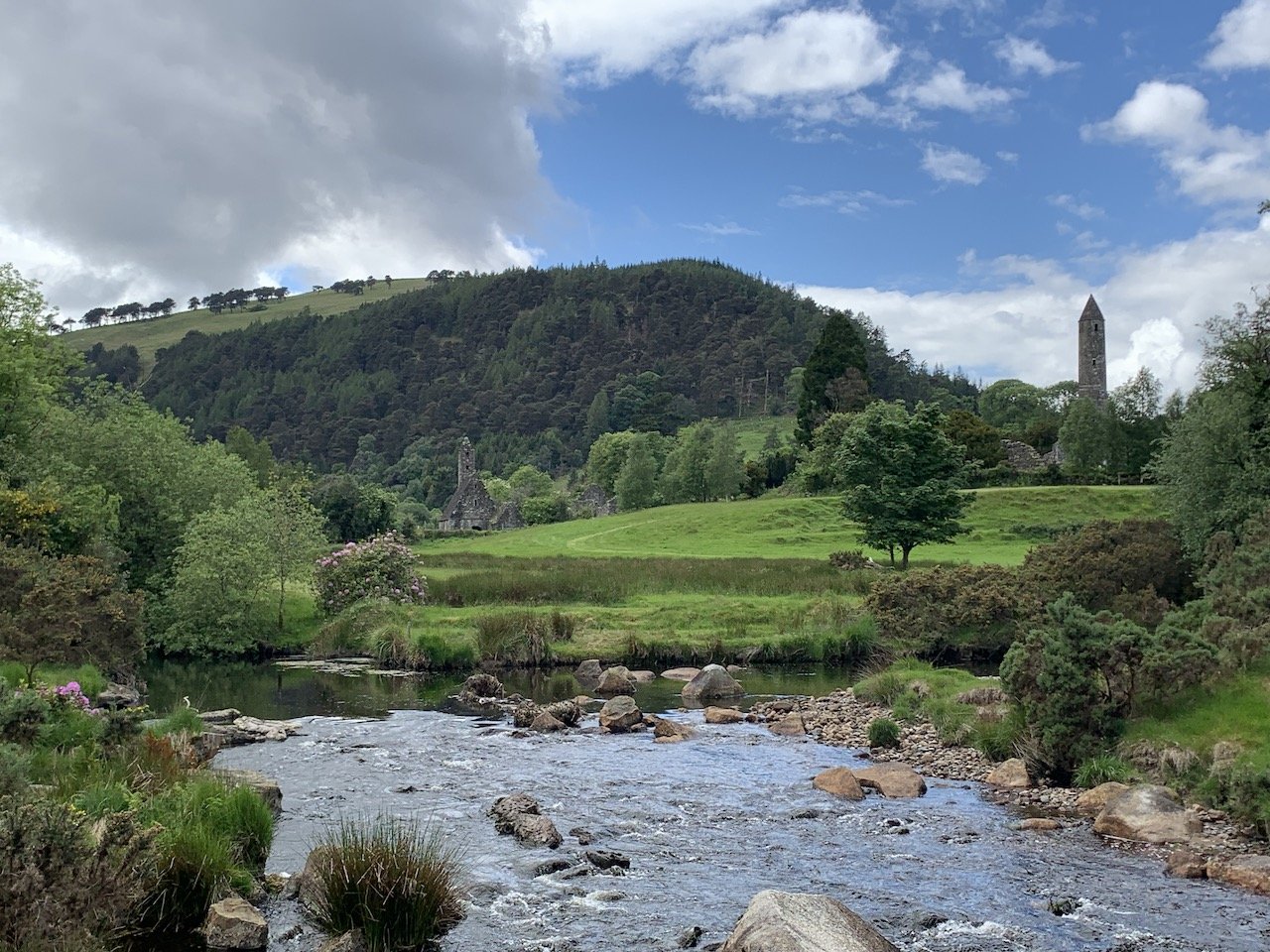
Reflections from the Pilgrims
Our Celtic Christian Pilgrimage - Storytelling with the Holy Spirit
by Kate Scott
From our introductory book, “An Invitation to Celtic Wisdom”, we learned about the practice of storytelling as a central art form by which Celtic Wisdom is transmitted. On our pilgrimage, I witnessed all of us sharing both ancient stories and our own life stories. These stories connected us in a way that will never leave me.
For example, on our hike at St. David’s, Wales, we hiked along one of the most stunning stretches of coastline to St. Non’s Chapel and learned about St. David, his mother, Saint Non, and two other ancient female saints at the Chapel. As I walked with a fellow pilgrim, I listened to her story of how she lost her husband in a bike accident, raised three children on her own, and regained her faith in the years that followed. I connected to her story because I was the same age as her youngest son, when I lost my own mother, due to an accident. I also connected with a story about the Welsh grandmother of our leader, Teresa Di Biase, who said her grandmother was a significant role model to her. I too, had a beloved grandmother who was my role model. We heard many stories about saints, about nature, the history of the Irish Rebellion, the Irish famine, the history of Celtic Christianity, and we shared stories about ourselves. On the last day as we shared together, I was nearly brought to tears when the former Presiding Bishop, Katharine Jefferts Schori, also a former oceanographer, said that perhaps the beautiful aspects of Celtic Christianity are resurfacing and spreading like mycelium in the forest floor. Surely, we were all connecting with a Higher Spirit.
The Celtic Christian Pilgrimage to Wales and Ireland led by Frank and Teresa was the fourth that I have experienced and the second time that I embarked on this one. Even so, I was eager to delve into the history, landscape, and spirituality more deeply.
The first full day of the pilgrimage was Pentecost Sunday. As we entered through the stone archway on the path above Eglwys Gadeiriol Tyddewi (St. David’s Cathedral), I gasped. I had forgotten what a magnificent impact the cathedral makes. It lies lower down, tucked in, not high on the hill as is customary for European cathedrals. No pirates and marauders can easily spy it from the sea!
As a little band of pilgrims we were ushered in to sit under the very nose of what turned out to be the Lord Bishop of St. David’s, The Right Reverend Dorrien Davies. The music was ethereal and Bishop Dorrien spoke, filled with the Holy Spirit and bringing us to tears. I will never forget the blessing of that service, and the Love that became a lodestar for the entire pilgrimage.
Although every day thereafter seemed to have a special star guiding it, I had a unique mission. My sister and I had joined the 2017 pilgrimage because Frank and Teresa were including Pennant Melangell and Solas Bhride in Kildare in the itinerary. I had taken the confirmation name of St.Melangell and she of St.Bridget. St.Melangell is a relatively obscure 6th century Welsh saint who is associated with the protection of the vulnerable, both animal and human. Her church is overseen by “the Guardian,” Christine Browne. Back in 2017 she had graced me with encouragement and kindness,
and I was shyly hopeful of telling her this time what a good spiritual companion St. Melangell had been to me since we had last spoken together. To my surprise, she recognized me instantly! In the short time we had together, she told me how much it meant to her to know that Melangell was now a name that was being carried across the Pond and that the saint had proven to be a strength to me. For that connection, from which we both have derived blessing and strength, I give profound thanks.
pob bendith, Jillian Melangell
Reflection on our Celtic Christian Pilgrimage to Wales
by Frank Shirbroun
The second stop on our Celtic Christian pilgrimage in Wales is St. Brynach’s Church, which stands beside the Nevern River in Pembrokeshire. According to tradition, St. Brynach [died 570 AD] founded a monastery here in the middle of the sixth century and this has been the site of continuous Christian worship down to the present day! When the church was left without ordained clergy in 2009, a local farmer and longtime resident, Steve Watkins, did not want to see the church close. He did not seek ordination for himself, but did take training in theology and worship. As the lay “Focal Minister” he has held Morning Prayer at the church every Sunday for the past 15 years. When we visit St. Brynach’s Church, Steve leads our pilgrims in Morning Prayer using the leather-bound 1790 Prayer Book that has been handed down in his family. When Steve turns around to face the altar for the recitation of the creed and holds aloft his prayer book, I am inevitably overcome with tears. Here is a holy man maintaining a Christian presence on this holy site first made holy by a Celtic Christian saint, Brynach. Thanks be to God for the faithful saints who have gone before us!
An Icon of the Holy
by Teresa Di Biase
The difference between ordinary tourism and pilgrimage has been likened to the difference between glancing and beholding. One is rapid, superficial; the other is unhurried, undertaken from a stance of patient waiting for what might, by the grace of God, be revealed. Somewhat like sitting before a holy icon.
Our pilgrimage to Wales and Ireland was not without its elements of tourism, but there were many more opportunities for beholding. We visited a number of holy places – “where prayer has been valid,” in T. S. Eliot’s words – but what stays in my memory are the holy people we encountered.
Have you ever been in the presence of someone you immediately sensed was holy? It is an experience I have had once or twice before in my life, and it was an experience I had on Pentecost Sunday, when we worshiped at St. David’s Cathedral in Wales. Bishop Dorrien Davies, who had been consecrated just four months earlier, was the presider and preacher. I loved listening to him sing and speak in the Welsh language of my forebears (of which I know very little) and the musical, Welsh-inflected English which is more familiar to me. But what was most vivid to me was my beholding Bishop Dorrien’s face, especially as he preached. Love seemed to pour out of him. I found myself wanting to be a more loving and faithful person just from being near him.
Years ago, Gerard Manley Hopkins expressed poetically what I experienced that day with Bishop Dorrien:
I say more: the just man justices;
Keeps grace: that keeps all his goings graces;
Acts in God's eye what in God's eye he is —
Chríst — for Christ plays in ten thousand places,
Lovely in limbs, and lovely in eyes not his
To the Father through the features of men's faces.
St. Brigid of Kildare
by Emily Licastro
It is said that there is an altar in one’s heart, and on this altar burns a candle. Sometimes this interior shrine gets dusty or cluttered from neglect. With our prayers and practices we sweep it clean, feed the flame, and there, rest into the presence of God, our most steadfast companion. Holy and Ancient One, endlessly patient, waiting for us to simply remember to return, to turn towards, and to soften our gaze enough to behold the One who is ever beholding us. So I have been taught.
My first introduction to the spiritual path was in my early teens, at a women’s fire ceremony on the eve of Brigid’s Day. My heart was set ablaze that night like the Yule greenery we tossed into the bonfire with our prayers: being included in the circle of women, the songs, and the stories of this ancient Celtic Goddess. My life began.
It is said that there is a thread we follow. What a blessing it is to even recognize that we’re holding it, and to be granted the generosity which makes it possible to say yes when it leads across the ocean to a distant land. So I have been shown.
Saint Brigid of Kildare, keeper of the ancient flame, woman of the threshold, I was pulled all the way to Ireland to meet you on your own ground.
I was warned that you were merely the Christian appropriation of the original Goddess Brigid. I was told not to expect much of your “Fire Temple” (just a low stone foundation behind a Cathedral). And yet, as soon as I approached, off came the shoes. Down the steps I was pulled, until I stood in the slight depression in the center of the gravel floor. I was held in place by the idea that Brigid’s sacred flame had burned RIGHT HERE long before your time as a flesh and blood woman of earth. My bare feet were on the same ground that I’d imagined since I first heard tales of village wise-women and temple priestesses as a girl, and had fallen in love with the romantic notion of growing up to be a woman who served the Goddess as they did; a keeper of the hearth.
Slowly I was drawn to my knees. As I folded in on myself, forehead and palms on the earth, tears of grief began to shake my whole body. I wept for the girl who grew up terrified and angry at how the Church assimilated some of the traditions of peoples who lived close to nature, and violently suppressed the rest of them. I wept for the girl who grew up wholeheartedly believing that she was meant to devote her life to a Goddess who wasn’t really in this world anymore, driven out centuries ago. It’s a lonely yearning to carry. The left-behind daughter, following a faint echo of a half-remembered/half-imagined call from the distant past.
Along with the grief though, a spring of joy bubbled up to the surface. Gratitude for all that I had learned and experienced on our pilgrimage washed through me; I was being offered a new narrative to live into. Sister Rita Minehan, CSB writes that, “St. Brigid stands at the meeting between two worlds. Neither the boundaries of Christianity nor the older beliefs can contain her exclusively.” This was exactly it. You were born into this land of our ancestors, on the cusp of great change. You kept the flame burning, and built upon those earlier foundations, integrating the old ways with the new. After your time, the sisters of your order continued on. Such a legacy you left! It was many centuries before the Church was finally able to extinguish the flame, but only for a short while in the scheme of things. Your light burns again, and shines brightly in the world, tended lovingly and fiercely by the Brigidine Sisters of Solas Bhride, where we would be visiting next. Keepers of the hearth.
I had to come all the way to THIS place to grasp that we are woven together by an unbroken thread. She is not gone. I am not left behind. We are all here together. With an overflowing heart, I kissed the ground, pressed my palms against it, and sat up. So I have been blessed.
St. Brigid, humbly I pray, may I walk in your ways. Forgive me for making my belief so small.
A Naoimh Bhríd, Muire na nGael, guí orainn (St. Brigid, Mary of the Gael, pray for us)




